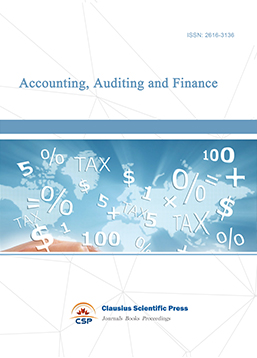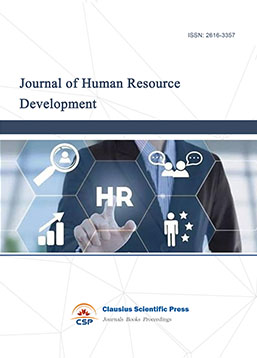Grasping the Trend of the Shipping Market: a Baltic Dry Index Prediction Method Based on Deep Learning
DOI: 10.23977/infse.2025.060217 | Downloads: 4 | Views: 161
Author(s)
Haoxiang Zhang 1
Affiliation(s)
1 Cushing Academy, 39 School St, Ashburnham, MA 01430, United States
Corresponding Author
Haoxiang ZhangABSTRACT
The Baltic Dry Index (BDI) is an international benchmark used to gauge the level of shipping freight rates for dry bulk goods and is an important measure of both the generalised economic consequences relative to the international shipping industry. The non-stationarity and strong non-linearity involved creates a huge forecasting challenge. The present study is based on a new forecasting framework based on a Gated Recurrent Unit (GRU) deep learning forecasting model based on a gating mechanism that provides for long run non-linear dependence in time series data. A data set exists comprising a total of 90 variables from (1988-2024): e.g. Supply Related (fleet capacity), Demand Related (prices for various raw materials) and Macro-Economic. The relevant model was trained and eventually compared with a number of current econometric and classical machine models, e.g., SVR, Random Forests etc., comparison being effected over different horizons using Mean Squared Error (MSE), Mean Absolute Error (MAE) etc., as being relevant for forecasting performance. The results show that the model presented consistently and significantly outperformed the existing benchmark models. Hence the study shows the capability and validity of the deep learning concept. Its ability to extract features hierarchically leads to latent features that exist, and which are not easily detectable by mainstream statistical models. Thus, it is a very powerful tool for conducting the analysis of the shipping market.
KEYWORDS
BDI Index, Artificial Intelligence, Deep Learning, Gated Recurrent Unit Neural NetworkCITE THIS PAPER
Haoxiang Zhang, Grasping the Trend of the Shipping Market: a Baltic Dry Index Prediction Method Based on Deep Learning. Information Systems and Economics (2025) Vol. 6: 129-137. DOI: http://dx.doi.org/10.23977/infse.2025.060217.
REFERENCES
[1] Bakshi, G., Panayotov, G. and Skoulakis, G. (2011) The Baltic Dry Index as a Predictor of Global Stock Returns, Commodity Returns, and Global Economic Activity. Social Science Electronic Publishing.
[2] Zhang X , Xia Z , He F ,et al.Forecasting crude oil prices with alternative data and a deep learning approach[J].Annals of Operations Research, 2025, 345(2).DOI:10.1007/s10479-024-06056-8.
[3] Angelopoulos, J. (2017) Time–Frequency Analysis of the Baltic Dry Index. Maritime Economics & Logs, 19, 1-23.
[4] Si, S. (2016) Forecasting Approaches of the Baltic Dry Index: A Literature Review. Social Science Research Network.
[5] Papailias, F. and Thomakos, D.D. (2013) The Baltic Dry Index: Cyclical Analysis and Forecasting. SSRN Electronic Journal.
[6] Z., H. and L.I., X. (2009) Volatility of Baltic Dry Index Using GARCH Type Models with Different Distributions. Journal of Shanghai Maritime University.
[7] Katris, C. and Kavussanos, M.G. (2021) Time Series Forecasting Methods for the Baltic Dry Index (BDI). Journal of Forecasting.
[8] Ren, J. (2020) Analysis of Correlation and Influence Degree between BDI Index and Fluctuation of Transport Capacity Index. Francis Academic Press.
[9] Geman, H., Smith, et al. (2012) Shipping Markets and Freight Rates: An Analysis of the Baltic Dry Index. Journal of Alternative Investments.
[10] Lin, F. and Sim, N.C.S. (2013) Trade, Income and the Baltic Dry Index. European Economic Review, 59, 1-18.
[11] Kuo, P.L., Chiu, C.L., Chen, C.S., et al. (2020) The Dynamic Relationships between the Baltic Dry Index and the BRICS Stock Markets: A Wavelet Analysis. Asian Economic and Financial Review, 10, 340-351.
| Downloads: | 20647 |
|---|---|
| Visits: | 538533 |
Sponsors, Associates, and Links
-
Accounting, Auditing and Finance

-
Industrial Engineering and Innovation Management

-
Tourism Management and Technology Economy

-
Journal of Computational and Financial Econometrics

-
Financial Engineering and Risk Management

-
Accounting and Corporate Management

-
Social Security and Administration Management

-
Population, Resources & Environmental Economics

-
Statistics & Quantitative Economics

-
Agricultural & Forestry Economics and Management

-
Social Medicine and Health Management

-
Land Resource Management

-
Information, Library and Archival Science

-
Journal of Human Resource Development

-
Manufacturing and Service Operations Management

-
Operational Research and Cybernetics


 Download as PDF
Download as PDF